Over & Overs: "Singin' in the Rain" (1952)
 Saturday, April 13, 2024 at 8:00PM
Saturday, April 13, 2024 at 8:00PM 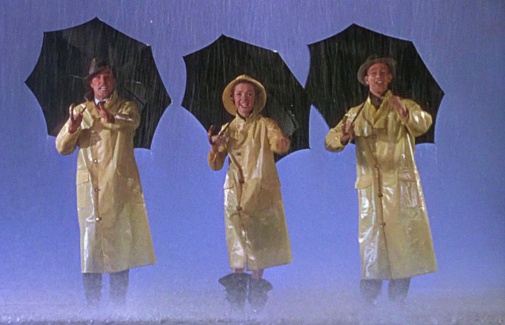
It's been a while since the Over & Overs series has shown up on The Film Experience's timeline, and it's as good a time as any to rectify that. Indeed, revisiting a beloved picture one has seen more times than one can count is the perfect idea for today's celebration. You see, a century ago, Stanley Donen was born in Columbia, South Carolina, the son of a dress shop manager and future movie lover. He'd also be a movie magician, capable of turning the screen into materialized joy, like an alchemist who used the camera to transform and transport his audiences. Though one finds several titles are worth appraising in his filmography, a single picture stands above all others, the musical to end all musicals. It's Singin' in the Rain, of course…
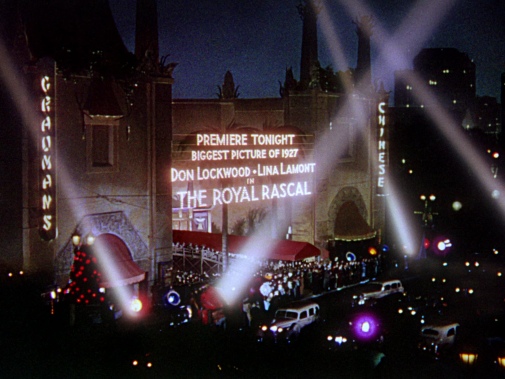
Is there anything else to say about this movie that hasn't been said already? Probably not, but one might as well be effusive for the centennial celebration's sake. After reading about the movie over the years, I realized something stands out regarding Donen's part. Though I'd never argue that the director has been forgotten in assessments of this masterpiece, it can feel like he's overshadowed by his collaborators. As head of the MGM unit focused on musicals, Arthur Freed is the odd producer with a historical status close to that of an auteur. Moreover, Gene Kelly's co-director credit and general star power are enough to blind you to whoever's standing by his side.
In that sense, there's something of Cosmo Brown and Don Lockwood about the two creatives, as if what's on screen was a warped reflection of their dynamic. I've already done a deep dive into Donald O'Connor's performance, so I won't repeat my conclusions about that side of Cosmo. His conception as a Donen dupe is another matter altogether, especially interesting when you consider our introduction to the character. On the red carpet that opens Singin' in the Rain, each star is received with a wave of applause, but poor old Cosmo is mostly ignored as a behind-the-scenes personality. Our Louella Parsons stand-in claims he's Don Lockwood's best friend and pianist, but there's little more than that.

Pushed to the margins of the scene, Cosmo reappears for Don's trip down memory lane, one of many sequences in the movie that function like a miniature narrative sprouting from the main story's body. It's a study in contrasts, juxtaposing the star's fictionalized past with images from the unglamorous reality. One thing remains constant in the two accounts, however – the collaboration between the two men. Could it be a comment on the work of Donen and Kelly? Their pals, Adolph Green and Betty Comden, wrote the script, so an inside joke wouldn't be too far-fetched. Then again, there are enough differences to contradict that theory.
While Cosmo and Don are childhood friends, Donen and Kelly are no such thing. They met as co-workers in the 1940 production of Pal Joey. A movie nut since an early age, Stanley Donen had fallen in love with Fred Astaire musicals and wished to pursue a life in dancing. A short stint in college gave way to a move to New York City, where the dropout started auditioning for work on stage. After a couple of failed tries, Donen secured a job as part of the Pal Joey chorus, sharing the limelight with Kelly during his breakthrough moment. In the show's titular role, the actor became an overnight sensation, a Broadway Star, though his ambitions far surpassed that first triumph.
Gene Kelly was to be a choreographer, and on the production of 1941's Best Foot Forward, he asked for Donen's help as an assistant. From chorus boy to stage manager to assistant choreographer, the up-and-comer was eventually fired by the show's director. Despite that, he would find new work on Broadway soon enough. He also set his sights on Hollywood, signing with MGM as a background dancer, before Kelly's own trip to La La Land reunited the two friends. As the nascent movie star gained more autonomy within the studio system, he relied on Donen to assist him and bring his mad ideas to fruition. Crucially, the Columbia native had a keen eye for moviemaking innovation.

While choreographing three numbers for Cover Girl, Donen came up with the notion of Kelly dancing with his reflection. He would later spearhead the concept of a dance shared between the human star and an animated Gerry for Anchors Aweigh. As Kelly grew as a star and dedicated some time to navy service, Donen kept developing his craft in the hierarchies of the MGM crew, aiming for the goal of directing his own movie. It almost came to pass with Take Me Out to the Ball Game, but Freed only gave him and Kelly leeway to work in the latter's dance numbers. That movie's success was vital in getting the pair hired to co-direct their first complete picture from top to bottom – On the Town.
Once again, much of that film's aesthetic boldness comes from Donen, especially when it comes to the use of real locations. Kelly's influence is felt whenever the material reality fades into a prototypical dream ballet. It's fair to say that, analyzing their work together and apart, Donen was always more curious about the particular properties of cinema. In contrast, Kelly's work as a director relied on theatrical conventions that highlighted performers but didn't always soar above formal expectations. Even in later period efforts, when working in such experiments as The Little Prince, Donen insisted on pushing the form, distorting the frame through optical illusions and the like.
Kelly's physicality, the athletic nature of his dancing, was reflected in directing ideas centered on the body's presence in front of the camera. Mind you, that's not a dig at one of cinema's great geniuses. I'm simply trying to distinguish their contributions to film, which explains why they were so monumental together. Separately, they're good, but nothing could stop them when they joined forces. Singin' in the Rain is their crowning glory, though it didn't start as their original idea. Instead, it came from Freed's insistence on building a musical based on 20s and 30s standards, which Comden and Green developed into a story about that era in the movie industry, the transition from silents to synchronized sound.
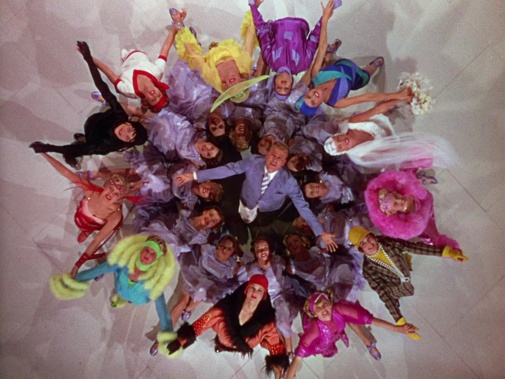
Not that Singin' in the Rain is a history lesson of any sort. Equal parts love letter and parody of silent cinema and early movie musicals, the picture is akin to that other tale Hollywood loves to tell about itself – A Star Is Born. In other words, it's a work of mythmaking where the matter of show business is the basis for self-romanticism and strong archetypes galore, simple narratives that swing for big emotions, glitz and glamour. In the world of Freed-Kelly-Donen-Comden-Green, however, these ideas resolve themselves into an optimistic comedy rather than a tearjerker. For someone who found his passion while watching the same kinds of movies the story draws from, this was an excellent opportunity for Donen to indulge and invent, right to the threshold of delirium and beyond.
The two co-directors made use of MGM's bounty of old sets and props, equipment too, bringing what's usually behind the camera to the front. Sequences like "Beautiful Girls" are pauses in the narrative flow that nevertheless fit into the spectacle Donen has devised, so much about the romantic comedy plot as it is about smiling nostalgically at the cinema of yore. Some gestures strike one as vintage Busby Berkeley retrofitted for 1950s cinematic technology, complete with rainbow-bright Technicolor and a robust sound mix, which would have been impossible in the early days of Talkies. And then there's the camera movement, elegant and unobtrusive as a norm, perfect to make the unfolding narrative feel like a dance.
Each step leads to another, a propulsive motion perpetuated for the entire runtime. Even when the camera is still, you feel something building up, bubbling over until it can manifest in musical splendor. I think back to Debbie Reynold's dress fluttering in the fake summer breeze as Gene Kelly sets up stage mechanisms to create the perfect scene for their blossoming love. The star-director's theatricality is there, for sure, but so is that Donen touch, playful with technique and presentation. That approach would find ways to make lovely froth out of anything in future solo projects. A Cinderella story set in the world of high fashion? Check! An infidelity farce full of split-screens and Dior? Check! Spy thrillers transformed into bubbly flirtations? Double check!!
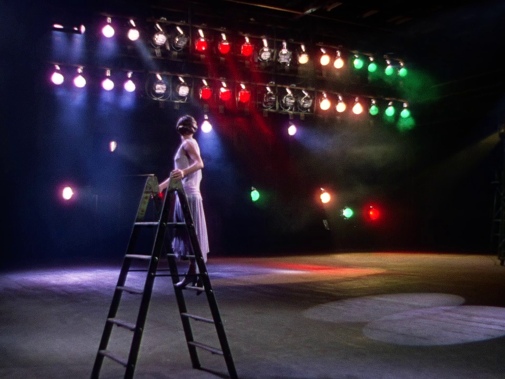
Just as the tools of cinematic artifice come to the forefront, so does Donen's artistry become evident throughout Singin' in the Rain. And so does Cosmo, for that matter, a backstage entity who finally gets to be seen in all his glory as part of the entertainment apparatus. Seeing O'Connor and Kelly tear up the screen in "Moses Supposes" or just exchanging funny faces and other such gags, I couldn't help but think of Singin' in the Rain as a film first and foremost defined by the two-pronged love between the audience and the movies, and between two pals putting on a show old-school-style. It's friendship cinema par excellence, thriving next to timeless romance and humor. What can I say? It's a perfect picture, no matter how you look at it. From every angle, there's nothing like Singin' in the Rain – what a glorious feeling!
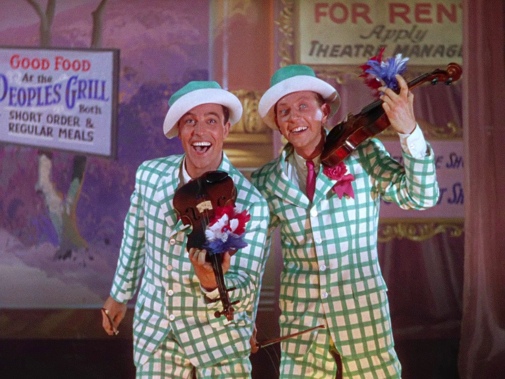
Singin' in the Rain is streaming on Max. You can also rent and purchase it on most of the major platforms.
